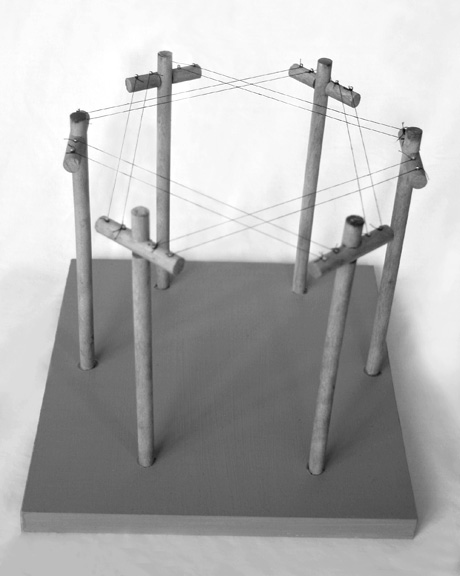Model of Eruv- Actual sculpture will be constructed with full scale telephone poles and wires For thousands of years, Jewish communities have existed as islands surrounded by a dominant culture. Sometimes this isolation was self selected, but mostly it was imposed. In America today, small pockets of Jewish culture thrive in a mostly Christian country. In ERUV, a star of David representing Judaism is formed by telephone wires and the crucifix-like poles which define the American landscape both literally and increasingly metaphorically.
Jewish communities particularly in the Middle East and Europe were traditionally surrounded by a protective (or sometimes segregational) wall. Within these borders, observant Jews were permitted to perform certain actions prohibited outside the wall. The theory is this: A home is created by walls and a roof. These walls have windows and doors, and are still solid borders between inside and outside. Inside the home, during the Sabbath, people are permitted to carry objects, such as keys and other objects. Outside the borders, in the public realm, such actions are prohibited during the Sabbath. How then can an observant Jew lock their house without carrying keys? How can a neighbor bring food to another neighbor? The answer is to extend the realm of the private sphere into the public realm-- to metaphorically extend the walls of the home to encircle the entire community. This is an easy task in communities where there are medieval walls, or where the community is surrounded by water. Where there are no such borders, the community leaders look to other infrastructure elements: fences, for example. It has become commonplace to employ telephone poles and wires to form eruvs around communities because of their omnipresence and contiguous nature.
|
